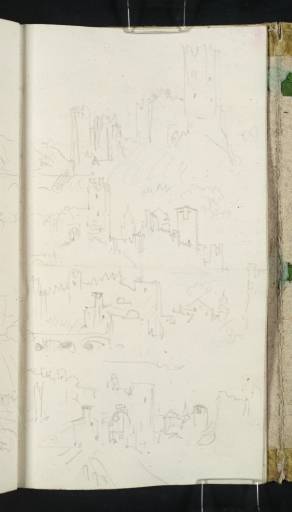References
How to cite
Matthew Imms, ‘The Walls and Towers of Castelfranco Veneto 1833’, catalogue entry, May 2019, in David Blayney Brown (ed.), J.M.W. Turner: Sketchbooks, Drawings and Watercolours, Tate Research Publication, March 2023, https://www

